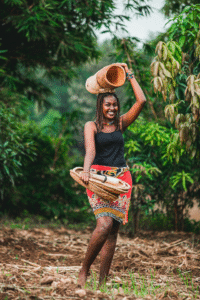The African Village of Gujarat: A Unique Cultural Enclave in India
India is a land of diverse cultures, languages, and traditions, where communities from different parts of the world have settled over centuries. One such fascinating community is the Siddis of Gujarat—a group of people of African descent who have made India their home for over 800 years. Often referred to as the “African Village of Gujarat,” their settlement in Jambur, near the Gir Forest, is a living testament to India’s multicultural history.
This article explores the origins, history, culture, and present-day life of the Siddi community in Gujarat, shedding light on their unique identity and struggles.
Historical Background: How Africans Came to Gujarat
- The Origins of the Siddis
The Siddis are descendants of the Bantu people from Southeast Africa, primarily from regions like Kenya, Tanzania, and Mozambique. Their migration to India occurred in multiple waves:
- Early Arrival (7th–8th Century):Some Siddis came as traders and sailors with Arab merchants, settling along the western coast of India.
- Medieval Period (13th–17th Century):Many were brought as slaves by Arab and Portuguese traders, while others arrived as soldiers and mercenaries employed by Indian rulers.
- Deccan Sultanates:Several Siddis rose to prominence as military commanders and administrators under the Bahmani Sultanate and later the Bijapur and Ahmednagar kingdoms.
- Settlement in Gujarat
In Gujarat, the Siddis were employed by the Nawabs of Junagadh as part of their royal guards and musicians. Over time, they settled in villages like Jambur and Sirvan, where their descendants continue to live today.
The Siddi Community in Modern Gujarat

- Location and Population
The primary Siddi settlement in Gujarat is Jambur, a small village near the Gir Forest in the Junagadh district. Another significant community resides in Sirvan village. According to estimates, there are around 8,000–10,000 Siddis in Gujarat today.
- Occupation and Livelihood
Traditionally, the Siddis worked as farm laborers, security guards, and musicians in royal courts. Today, many are engaged in:
- Agriculture (mainly sugarcane and groundnut farming)
- Daily wage labor
- Government jobs (some have secured positions through reservations under the ST reservation category)
Despite government schemes, poverty and lack of education remain major challenges.
- Culture and Traditions
The Siddis have preserved many African traditions while blending them with Indian influences:
- Language
- They speak Gujaratibut retain some words of Bantu origin.
- A few elders still remember traditional African songs and chants.
- Music and Dance
- Dhamal Dance:A high-energy dance form accompanied by drumbeats, resembling East African tribal dances.
- Musical Instruments:They use the Mugarman (a type of drum) and other percussion instruments.
- Religion
- Most Siddis in Gujarat are Muslims, though some follow Christianity and Hinduism.
- They celebrate festivals like Eidand Urs but also partake in local Gujarati festivals.
- Cuisine
- Their diet includes Gujarati staples like rotli, dal, and rice, but with a preference for spicy flavors.
- Some traditional African cooking methods, like slow-cooked meat dishes, are still practiced.
Challenges Faced by the Siddi Community
Despite their rich heritage, the Siddis face several socio-economic challenges:
- Identity and Recognition
- The Siddis were recognized as a (ST)in 2003, helping them access education and job reservations.
- However, many still face discrimination due to their African features.
- Economic Struggles
- Limited access to quality education and employment opportunities keeps many in poverty.
- Some migrate to cities like Ahmedabad and Surat for work but face exploitation.
- Preservation of Culture
- Younger generations are losing touch with African traditions, adopting mainstream Gujarati culture.
- Efforts by NGOs and the government to document their history are ongoing but insufficient.
Government and NGO Initiatives
Several programs aim to uplift the Siddi community:
- Sports Development:
- The Special Area Games Scheme(1987) identified Siddi youth for athletics due to their natural agility. Some excelled in boxing and sprinting but lacked sustained support.
- Educational Programs:
- Scholarships and hostels for Siddi students have been introduced.
- NGOs like ‘SEWA’and ‘Aajeevika Bureau’ provide skill training.
- Cultural Preservation:
- The Gujarat government promotes Siddi dance and music at cultural festivals.
- Documentaries and research projects highlight their history.
The Future of the Siddis in Gujarat
The Siddi community stands at a crossroads:
- Integration vs. Identity:Balancing assimilation into Indian society while preserving their African roots is a challenge.
- Youth Empowerment:Education and sports can provide new opportunities for the younger generation.
- Tourism Potential:Jambur could become an eco-cultural tourism spot, showcasing Siddi heritage.
Conclusion
The African village of Gujarat—home to the Siddis—is a remarkable example of India’s multicultural fabric. Their journey from Africa to India, their struggles, and their resilience make them an integral yet often overlooked part of Indian society. While challenges remain, efforts to preserve their culture and improve their livelihoods are crucial in ensuring that this unique community thrives in the years to come.
By acknowledging and celebrating the Siddis, we honor not just their past but also the diversity that makes India truly extraordinary.



